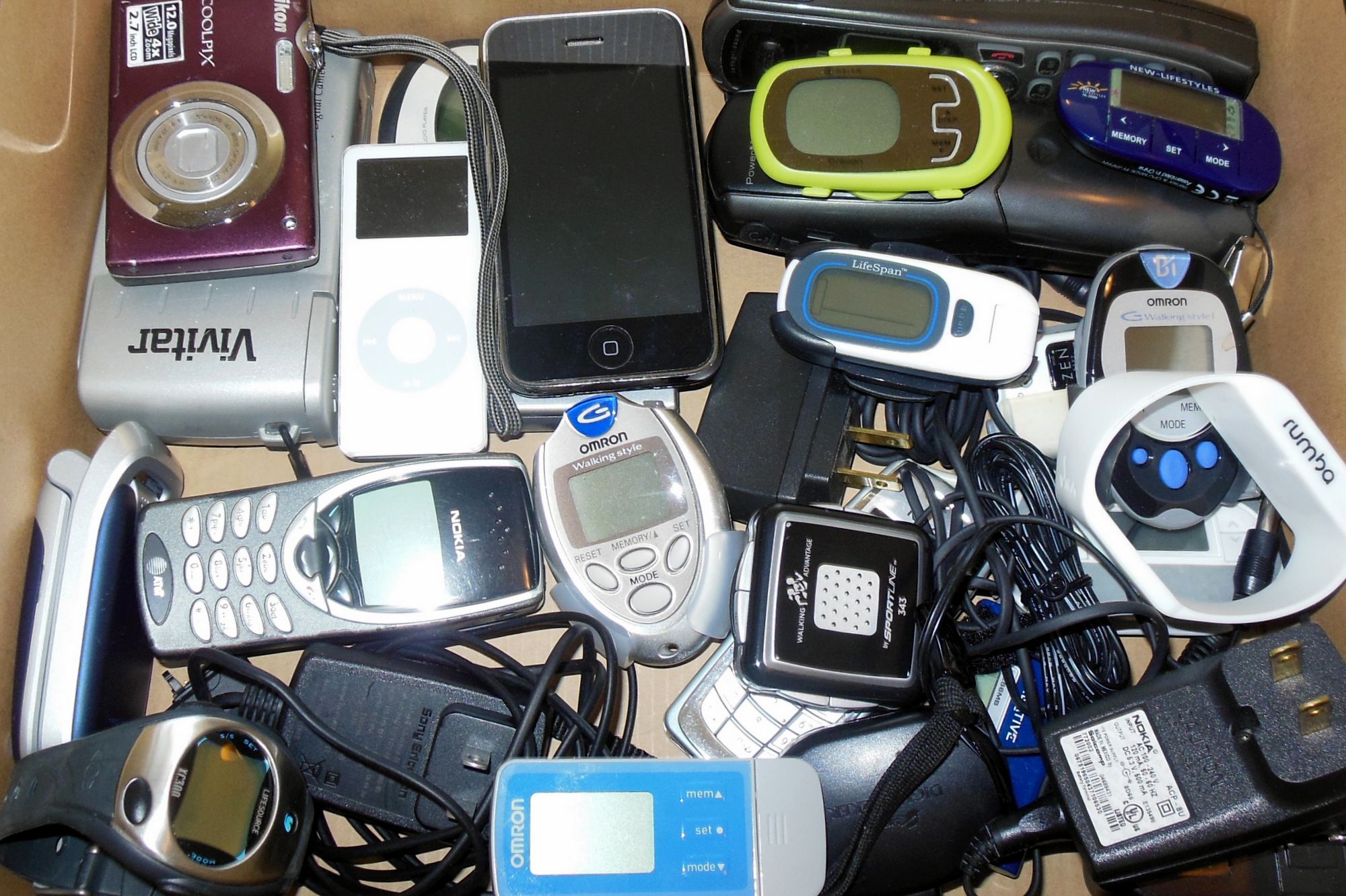
- Copy Music From Your iPod to Your Mac
- How to Find Your iPods Hidden Folders with Terminal
- Justin Sullivan/Getty Images News/Getty Images
It’s genuine; you may replicate your music from your iPod to your Mac, essentially turning your iPod into an emergency backup of any of the media files you saved in your iPod. There are few matters that Mac users dread other than the unexpected loss of information, whether from a failed hard drive or the accidental deletion of documents. Don’t rely on losing your files; you may be happy you’ve performed everyday backups.

What? You haven’t any backups, and you just accidentally deleted some of your favorite tunes and videos from your Mac? Well, all might not be lost, at least now, not in case you’ve been retaining your iPod synced together with your computer iTunes library. If so, your iPod can function as your backup. By following these instructions, you need to be capable of reproducing your tracks, films, and movies from your iPod on your Mac and then adding them again to your iTunes library.
A quick be aware earlier than we start: If you’re using iTunes 7 or later, refer to Restore Your iTunes Music Library by Copying the Music From Your iPod. If you’re using an older version of iTunes, examine the guide technique of moving content material from your iPod to your Mac.
- What You Need
- An iPod together with your content material intact.
- A Mac in completely operational condition.
- An iPod syncing cable.
Hold down the Command and Option key while you plug your iPod into your Mac. Justin Sullivan / Staff / Getty Images. Before you connect your iPod to your Mac, you must save your iTunes from syncing with your iPod. If it does, it will delete all the statistics on your iPod. Why? Because, at this point, your iTunes library lacks a few or all the songs or different files on your iPod. If you sync your iPod with iTunes, you’ll grow to be with an iPod that’s missing the identical files that your iTunes library is missing.
Warning: The following instructions for turning off iTunes syncing are for variations of iTunes earlier than iTunes 7. Do no longer use the method defined below, except if you’re using an older model of iTunes. You can find out more about the various versions of iTunes and the way syncing is turned off at:
Recover Your iTunes Music Library From Your iPod
Disable Syncing
Press and keep the Command + Option keys while you plug in your iPod. Don’t release the Command + Option keys till you see your iPod show in iTunes. Confirm that your iPod is hooked to iTunes and your Mac’s computing device.
IPod Not Showing Up?
Getting your iPod to reveal up to your computing device can seem to be hit or omitted occasionally. Before you pull your hair out, strive for those two tricks: Click on a clean location of your desktop and pick Preferences from the Finder menu. Select the General tab. Ensure a checkmark is inside the field labeled CDs, DVDs, and iPods.
Select the Sidebar tab. Locate the Devices section of the list, and make sure a checkmark in the field categorized CDs, DVDs, and iPods. IPod Still Not on the Desktop? Launch Terminal, positioned at /Applications/Utilities. At the Terminal activate, enter the following: diskutil list, after which press go back or enter. Look for the name of your iPod underneath the NAME column.
Once you discover your iPod name, test the proper one and find the disk-wide variety under the IDENTIFIER column. Make a word of the disk name; it has to be something like a disk with a range after it, including disk3. In the Terminal window, input the subsequent on the Terminal activate diskutil mount disk# wherein disk# is the disk name determined inside the Identifier column, as mentioned above. An instance might be:
- diskutil mount disk3
- Press enter or go back.
- Your iPod ought to now be set up on your Mac’s computer.
- View Your iPod Hidden Folders
- Terminal Command to view hidden folders
Use Terminal to find your Mac’s hidden secrets. Screenshot courtesy of Coyote Moon, Inc. Once you mount your iPod on your Mac’s desktop, you’ll moderately expect a good way to use the Finder to browse via its files. But in case you double-click the iPod icon on your computing device, you will see simply three folders indexed: Calendars, Contacts, and Notes. Where are the music files? Apple chose to hide the folders that comprise an iPod’s media files, but you may, without problems, make these hidden folders seen by way of the usage of Terminal, the command-line interface included with OS X.
- Terminal Is Your Friend
- Launch Terminal, positioned at /Applications/Utilities/.
- Type or reproduce/paste the following commands. Press the go-back key once you input every line.
- Defaults write com. Apple.Finder AppleShowAllFiles TRUE
- killall Finder
The traces you enter into the Terminal will allow the Finder to show all the hidden files in your Mac. The first line tells the Finder to display all documents, regardless of the confidential flag. The second line stops and restarts the Finder so adjustments can take effect. You may additionally see your computer disappear and reappear while you execute these instructions; that is normal.
- Locate the Media Files on Your iPod
- Finder showing song files on an iPod
The hidden music documents no longer easily recognize names—screenshot courtesy of Coyote Moon, Inc. Now that you’ve told the Finder to display all hidden files, you can find your media files and duplicate them to your Mac.
Where’s the Music?
Double-click the iPod icon for your computer or click on the iPod’s name in a Finder window’s sidebar.
Open the iPod Control folder. Open the Music folder. The Music folder contains your track and any movie or video files you copied on your iPod. You may be amazed that the folders and documents inside the Music folder aren’t named in any difficult, discernable manner. The folders constitute your numerous playlists; the files in every folder are the media files, songs, audiobooks, podcasts, or films associated with that particular playlist. Fortunately, even though the file names do not include recognizable data, the internal ID3 tags are intact. As a result, any utility that could study ID3 tags can type the files out for you. (Not to fear; iTunes can read ID3 tags, so you need to look no in addition to your PC.)
Copy the iPod’s Data to Your Mac.
Now that you realize where your iPod shop’s media files are, you can reproduce their lower back for your Mac. The simplest manner to do this is to apply the Finder to pull and drop the files to the correct region. I advocate copying them to a new folder on your desktop.
Use the Finder to Copy Files
Right-click on a clean region of your computing device and pick ‘New Folder’ from the pop-up menu. Name the new folder iPod Recovered or every other name that moves your fancy. Drag the Music folder from your iPod to the newly created folder on your Mac. The Finder will begin the document copying process. Depending on the number of facts on the iPod, this can also take a while. Have a coffee (or lunch when you have lots of documents). When you come back, proceed to the next step.
Add the Recovered Music Back to iTunes
iTunes alternatives
Let iTunes manipulate your library. Screenshot courtesy of Coyote Moon, Inc. You have correctly recovered your iPod’s media documents and copied them to a folder in your Mac. The subsequent step is to use the Add to Library command in iTunes to add iTunes documents.
- Configure iTunes Preferences
- Open iTunes Preferences by choosing ‘Preferences’ from the iTunes menu.
- Select the ‘Advanced tab.
- Place a look at the mark after ‘Keep iTunes Music folder prepared.’
- Place a test mark next to ‘Copy documents to iTunes Music folder while including to library.’
- Click the ‘OK’ button.
- Add to Library
- Select ‘Add to Library’ from the iTunes File menu.
- Browse to the folder that includes your recovered iPod music.
- Click the ‘Open’ button.
iTunes will replicate the files to its library and read the ID3 tags to set every track’s name, artist, album genre, etc. You can also run into one unusual little quirk, depending on which iPod you’ve got and which version of iTunes you use. While the Add to Library command is occasionally used on recovered iPod documents, iTunes might not be able to see the media documents in the song folder you copied from your iPod, even though you may see them simply great in the Finder. To paint around this hassle, create a new folder on your computer, then reproduce the person track documents from the iPod Recovered folder to the brand new folder. For instance, inside your iPod Recovered folder (or something you choose to call it) may be a chain of folders called F00, F01, F02, etc. Your media documents are inside the F series of folders, with names like BBOV.Aif, BXMX.M4a, etc. Copy the BBOV.Aif, BXMX.M4a, and different media documents to the brand new folder in your computing device. Then, use the Add to Library command in iTunes to feature them for your iTunes library.
Send Those Formerly Hidden Files Back Into Hiding
During the recovery system, you made all the hidden files and folders on your Mac visible. When you use the Finder, you spot all varieties of odd-looking entries. You recovered the formerly hidden files. You needed to send them all again into hiding.
READ MORE :
- Top Digital Photo Software for Family Photos
- Liberal Arts and Your Career
- The way to save a life – first-aid advice you’ll take into account
- Mac Printer Sharing With Windows 7
- Control Your Mac Using Siri














